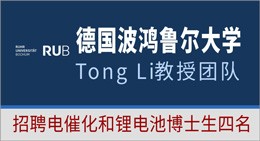当前位置:
X-MOL 学术
›
Environ. Sci.: Processes Impacts
›
论文详情
Our official English website, www.x-mol.net, welcomes your
feedback! (Note: you will need to create a separate account there.)
Preliminary insight into the intracellular behaviour of rare earths and other technology-critical elements (TCEs) in northern pike liver: study of TCE-binding biomolecules via size-exclusion HPLC-ICP-MS.
Environmental Science: Processes & Impacts ( IF 4.3 ) Pub Date : 2025-01-22 , DOI: 10.1039/d4em00674g
Zrinka Dragun 1 , Zoran Kiralj 1 , Željka Fiket 1 , Dušica Ivanković 1
Environmental Science: Processes & Impacts ( IF 4.3 ) Pub Date : 2025-01-22 , DOI: 10.1039/d4em00674g
Zrinka Dragun 1 , Zoran Kiralj 1 , Željka Fiket 1 , Dušica Ivanković 1
Affiliation
Technology-critical elements (TCEs) refer to the elements that play an important role in many emerging technologies and the production of advanced materials, and these include lanthanides, tungsten and vanadium. Actinides, Tl, and Pb, which also belong to TCEs, are abundantly used in power generation, industrial applications, and modern agricultural practices. The information on the influence of these elements on the aquatic environment and biota is still rather scarce. Thus, the distributions of the above-mentioned metals among cytosolic biomolecules of different molecular masses in the liver of the northern pike (Esox lucius) from the Mrežnica River (Croatia) were studied to obtain an insight into their intracellular behaviour and potential for toxicity. The applied method was a hyphenated system of size-exclusion high-performance liquid chromatography and inductively coupled plasma mass spectrometry. In the samples with lower cytosolic concentrations, the obtained distributions of several TCEs (lanthanides, W, Th, and U) and Pb, among biomolecules of a wide range of molecular masses, which covered the entire column separation range (<10 to >600 kDa), indicated their nonspecific binding to various intracellular components. In the sample with the highest cytosolic concentration, a shift towards the highest molecular masse (>600 kDa) was observed for lanthanides and actinides, which is a sign of their possible binding to protein aggregates. In contrast, W and Pb showed a preference for medium molecular mass biomolecules (30-100 kDa). Moreover, it was hypothesized that prominent elution of U and Pb observed in the low molecular mass region (<10 kDa) possibly indicated their partial detoxification. Potential Pb associations with metallothionein-like proteins were also recorded (∼6-7 kDa). The remaining two elements, V and Tl, exhibited more specific intracellular binding, as they were eluted within one/two narrow peaks in the high molecular mass region (575 kDa/100-400 kDa). The tendency of the studied TCEs and other potentially toxic elements to bind to medium and high molecular mass intracellular proteins necessitates further research of their specific targets.
中文翻译:

初步了解北方梭子鱼肝中稀土和其他技术关键元素 (TCE) 的细胞内行为:通过尺寸排阻 HPLC-ICP-MS 研究 TCE 结合生物分子。
技术关键元素 (TCE) 是指在许多新兴技术和先进材料生产中发挥重要作用的元素,其中包括镧系元素、钨和钒。锕系元素、Tl 和 Pb 也属于 TCE,广泛用于发电、工业应用和现代农业实践。关于这些元素对水生环境和生物群的影响的信息仍然相当稀少。因此,研究了上述金属在来自克罗地亚 Mrežnica 河的北方梭子鱼 (Esox lucius) 肝脏中不同分子量的胞质生物分子中的分布,以深入了解它们的细胞内行为和潜在的毒性。应用的方法是一种尺寸排阻高效液相色谱和电感耦合等离子体质谱的联用系统。在胞质浓度较低的样品中,获得的几种 TCE(镧系元素、W、Th 和 U)和 Pb 在宽分子量生物分子中的分布,覆盖了整个色谱柱分离范围(<10 至 >600 kDa),表明它们与各种细胞内成分的非特异性结合。在胞质溶胶浓度最高的样品中,观察到镧系元素和锕系元素向最高分子量 (>600 kDa) 移动,这是它们可能与蛋白质聚集体结合的标志。相比之下,W 和 Pb 表现出对中等分子量生物分子 (30-100 kDa) 的偏好。此外,据推测,在低分子量区域 (<10 kDa) 观察到的 U 和 Pb 的显着洗脱可能表明它们部分解毒。 还记录了与金属硫蛋白样蛋白的潜在 Pb 关联 (∼6-7 kDa)。其余两种元素 V 和 Tl 表现出更特异性的细胞内结合,因为它们在高分子量区域 (575 kDa/100-400 kDa) 的一个/两个窄峰内洗脱。所研究的 TCE 和其他潜在毒性元素倾向于与中高分子量细胞内蛋白结合,因此需要进一步研究其特定靶标。
更新日期:2025-01-10
中文翻译:

初步了解北方梭子鱼肝中稀土和其他技术关键元素 (TCE) 的细胞内行为:通过尺寸排阻 HPLC-ICP-MS 研究 TCE 结合生物分子。
技术关键元素 (TCE) 是指在许多新兴技术和先进材料生产中发挥重要作用的元素,其中包括镧系元素、钨和钒。锕系元素、Tl 和 Pb 也属于 TCE,广泛用于发电、工业应用和现代农业实践。关于这些元素对水生环境和生物群的影响的信息仍然相当稀少。因此,研究了上述金属在来自克罗地亚 Mrežnica 河的北方梭子鱼 (Esox lucius) 肝脏中不同分子量的胞质生物分子中的分布,以深入了解它们的细胞内行为和潜在的毒性。应用的方法是一种尺寸排阻高效液相色谱和电感耦合等离子体质谱的联用系统。在胞质浓度较低的样品中,获得的几种 TCE(镧系元素、W、Th 和 U)和 Pb 在宽分子量生物分子中的分布,覆盖了整个色谱柱分离范围(<10 至 >600 kDa),表明它们与各种细胞内成分的非特异性结合。在胞质溶胶浓度最高的样品中,观察到镧系元素和锕系元素向最高分子量 (>600 kDa) 移动,这是它们可能与蛋白质聚集体结合的标志。相比之下,W 和 Pb 表现出对中等分子量生物分子 (30-100 kDa) 的偏好。此外,据推测,在低分子量区域 (<10 kDa) 观察到的 U 和 Pb 的显着洗脱可能表明它们部分解毒。 还记录了与金属硫蛋白样蛋白的潜在 Pb 关联 (∼6-7 kDa)。其余两种元素 V 和 Tl 表现出更特异性的细胞内结合,因为它们在高分子量区域 (575 kDa/100-400 kDa) 的一个/两个窄峰内洗脱。所研究的 TCE 和其他潜在毒性元素倾向于与中高分子量细胞内蛋白结合,因此需要进一步研究其特定靶标。

































 京公网安备 11010802027423号
京公网安备 11010802027423号